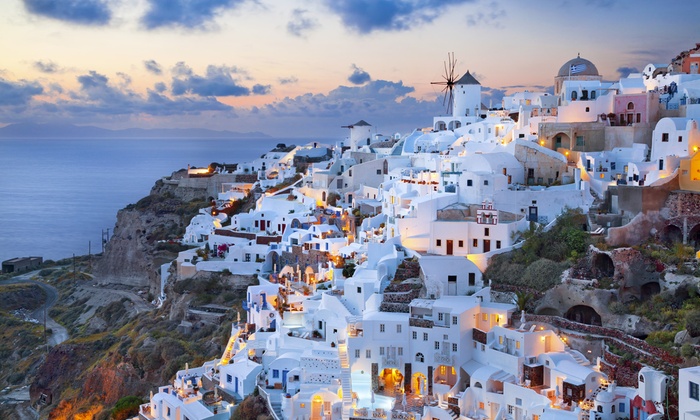MICT: India’s Largest Cruise Terminal Begins Operations
Explore the Mumbai International Cruise Terminal (MICT), India’s largest cruise hub, now operational. Discover its features, economic impact, and role in the Cruise Bharat Mission. Plan your next cruise with FastTreck Travels!

MICT: India’s Largest Cruise Terminal Sets Sail, Redefining Maritime Tourism
On April 21, 2025, India marked a historic milestone in its maritime and tourism sectors with the inauguration of the Mumbai International Cruise Terminal (MICT), the country’s largest and most advanced cruise terminal. Located at Ballard Pier in South Mumbai, Union Minister of Ports, Shipping, and Waterways, Sarbananda Sonowal, flagged this state-of-the-art facility, signaling India’s ambitious push to become a global cruise tourism hub. Developed under the Cruise Bharat Mission, the MICT blends cutting-edge infrastructure, modern design, and Mumbai’s rich maritime heritage to offer an unparalleled passenger experience. This article dives deep into the details of MICT, its features, significance, and its potential to transform India’s cruise tourism landscape.
A Vision Realized: The Genesis of MICT
The MICT is the culmination of a vision that began over two decades ago, with its foundation stone laid on January 18, 2018, by Union Minister Nitin Gadkari and Maharashtra Chief Minister Devendra Fadnavis. Conceived as part of the Cruise Bharat Mission and the broader Sagarmala initiative, the terminal aims to modernize India’s maritime infrastructure and elevate its position in the global cruise industry. The project, costing INR 556 crore (approximately USD 66 million), was developed through a public-private partnership (PPP) model, with operations managed by JM Baxi & Co in collaboration with Ballard Pier Port Private Limited. The Mumbai Port Authority (MbPA) signed a 30-year concession agreement with the private operators, including a INR 30 crore security deposit and an annual rent of INR 5 crore with a 5% yearly escalation.
The MICT replaces an outdated 25,000-square-foot terminal shed at Ballard Pier, transforming it into a sprawling 415,000-square-foot world-class facility. Designed to meet global standards, the terminal is poised to handle 1 million passengers annually and accommodate 500 cruise ships each year, making it a cornerstone of India’s maritime ambitions.
Architectural Marvel: Design and Features
The MICT is not just a functional transit hub; it’s an architectural masterpiece that celebrates Mumbai’s maritime spirit. Spanning a G+3 structure (ground plus three floors), the terminal covers 415,000 square feet, with the first two floors (207,000 square feet) dedicated to passenger operations and the upper two floors reserved for commercial spaces, including retail and dining.
Key Design Elements:
-
Fluid Architecture: The terminal’s design reflects Mumbai’s coastal identity with a wavy ceiling that mimics the ocean’s flow, complemented by rose gold accents and minimalist aesthetics.
-
Heritage-Inspired Entry: The entrance pays homage to Mumbai’s maritime history, featuring plaques and decor that evoke the city’s seafaring legacy.
-
Wave Seating and Selfie Points: The interiors include wave-inspired seating arrangements and Instagram-worthy selfie spots, blending functionality with a vibrant, tourist-friendly ambiance.
-
Sustainable Features: The terminal incorporates a Shore-to-Ship electric power facility, allowing vessels to plug into onshore electricity, reducing diesel generator use and cutting emissions.
Operational Infrastructure:
-
Capacity: MICT can handle 10,000–15,000 passengers daily and up to 1 million annually, with the ability to dock five cruise ships simultaneously, each up to 300 meters long with an 11-meter draft.
-
Check-In and Immigration: The terminal boasts 72 check-in and immigration counters, ensuring swift and efficient passenger processing.
-
Parking and Accessibility: A multi-level parking complex accommodates over 300 vehicles, while 22 elevators and 10 escalators ensure seamless movement within the facility.
-
Commercial Spaces: The upper floors feature shopping and leisure areas, including restaurants and retail outlets, enhancing the passenger experience.
The terminal’s design and infrastructure position it as a rival to global cruise hubs like Miami’s MSC Terminal, offering a blend of luxury, efficiency, and cultural resonance.
The Cruise Bharat Mission: A Catalyst for Growth
The MICT is a flagship project of the Cruise Bharat Mission, which aims to revolutionize India’s cruise tourism industry by 2029. The mission rests on three pillars: ocean and harbor cruises, river and inland cruises, and island and lighthouse cruises. Key objectives include:
-
Developing 10 international sea cruise terminals and 100 river cruise terminals.
-
Launching 5 marinas along India’s coastline.
-
Integrating over 5,000 km of waterways for seamless cruise operations.
-
Attracting 1 million sea cruise passengers and 1.5 million river cruise passengers by 2029.
-
Creating 400,000 direct and indirect jobs across the cruise value chain.
The MICT is expected to play a pivotal role in achieving these goals, building on the success of existing international terminals in Visakhapatnam and Chennai. Union Minister Sonowal emphasized that the terminal aligns with Prime Minister Narendra Modi’s vision of transforming India into a global cruise hub, stating, “Mumbai, with its longstanding repute as a major maritime hub, commenced cruise operations from MICT, providing passengers modern amenities for a better and safer experience.”
Economic and Tourism Impact
The MICT is set to be a game-changer for India’s tourism and economy. With cruise passenger numbers already surging by 400% since 2014, the terminal is expected to accelerate this growth. By 2030, officials project 900 cruise calls annually, up from the current 200–300. The terminal will cater to both domestic and international travelers, reducing the reliance of Indian tourists on foreign ports like Singapore and Dubai. Around 300,000 Indians travel on cruises annually, most embarking from abroad. The MICT aims to shift this trend by offering direct access to international cruise destinations from Mumbai.
Economic Benefits:
-
Job Creation: The Cruise Bharat Mission projects 400,000 new jobs by 2029, spanning hospitality, transport, tourism services, and local crafts.
-
Local Economy Boost: The terminal will drive demand for ancillary services, including hotels, restaurants, and guided tours, benefiting Mumbai’s small businesses and artisans.
-
Maritime Training: The MICT will foster collaboration with maritime training institutes, updating curricula and creating placement opportunities for students.
Tourism Boost:
-
Global Appeal: The terminal’s world-class facilities and strategic location make Mumbai an attractive homeport for international cruise lines like Cordelia Cruises, which currently operates twice weekly from Mumbai.
-
Domestic Growth: The MICT will promote coastal tourism, encouraging Indians to explore destinations along the country’s 7,500-km coastline, including Goa, Kochi, and the Andaman Islands.
-
Marina Development: The Mumbai Port Authority is also developing a marina near Princess Dock, further enhancing Mumbai’s appeal as a cruise and yachting destination.
Sustainability and Heritage Preservation
In addition to its tourism and economic goals, the MICT project emphasizes sustainability and heritage preservation. The Shore-to-Ship electric power facility reduces the terminal’s carbon footprint, aligning with global trends toward greener maritime operations. The terminal’s design incorporates energy-efficient systems and sustainable materials, setting a benchmark for future infrastructure projects in India.
During the inauguration, Minister Sonowal also unveiled several heritage-related initiatives:
-
Renovated Fire Memorial: Located at Victoria Docks, the memorial honors the heroic contributions of Mumbai Port Fire Services personnel.
-
Restored Heritage Buildings: Two iconic structures, Fort House at Ballard Estate and Evelyn House at Colaba, were renovated to preserve Mumbai’s architectural legacy.
-
Sagar Upvan Gardens: The revamped gardens at Colaba offer a green oasis for tourists and locals, enhancing the city’s waterfront appeal.
These efforts reflect a commitment to balancing modernization with cultural preservation, ensuring that Mumbai’s maritime heritage remains a vibrant part of its identity.
Challenges and Future Prospects
While the MICT is a monumental achievement, it faces challenges that could impact its long-term success. The high cost of cruise travel remains a barrier for many Indian tourists, and competition from established cruise hubs in Asia, such as Singapore and Hong Kong, is fierce. Additionally, the terminal’s success will depend on consistent maintenance, efficient operations, and robust marketing to attract global cruise operators.
Looking ahead, the MICT is expected to catalyze further maritime developments in India. The Vadhavan Port, a INR 76,000 crore project in Maharashtra, will feature a major container terminal, complementing MICT’s cruise operations. The Cruise Bharat Mission’s ambitious targets, including 2.5 million cruise passengers by 2029, signal a transformative phase for India’s maritime industry.
Conclusion: A New Era for Indian Cruise Tourism
The Mumbai International Cruise Terminal is more than just a port; it’s a gateway to India’s aspirations as a global maritime and tourism powerhouse. With its world-class facilities, stunning design, and strategic alignment with the Cruise Bharat Mission, MICT is poised to redefine cruise tourism in India. As Mumbai takes its place on the global cruise map, the terminal promises to deliver unforgettable experiences for travelers while driving economic growth and cultural preservation.
For travelers eager to explore the seas, MICT offers a luxurious and seamless embarkation point, whether you’re setting sail for international waters or discovering India’s coastal gems. Keep an eye on FastTreck Travels for updates on cruise itineraries, tips for planning your journey, and the latest developments in India’s booming cruise industry. The MICT is open, and India’s cruise adventure has just begun!















